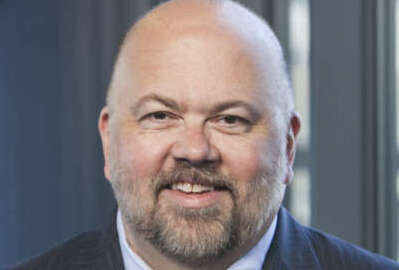
Next pay raise: 2020, if you get lucky
Unless Congress takes positive action there will be no January 2019 pay raise.
Eight to 10 years ago a national newspaper published a front page story—with lots of impressive and detailed backup numbers—which said categorically that federal employees make more than nonfederal employees.
That story was followed by others showing feds got more vacation time, sick leave creditable toward retirement and had a far superior retirement program compared to virtually anything in the private sector. Again, tons of numbers of back it up. Most of the rest of the media ran with it. Nobody ever lost a nickle, or a reader, by bashing bureaucrats, right?
Most of the feds-are-overpaid data came from Washington-based conservative think tanks, primarily the highly respected Heritage Foundation and the American Enterprise Institute. They in turn cited data from government and congressional sources. The Heritage study “found that federal employees receive 22 percent higher wages than similar workers in the private sector. “ When the value of fringe benefits—retirement, leave, etc.—was factored in” the gap grew to 30 to 40 percent,” according to the study.
Numbers don’t lie, right?
Some people trace the overpaid federal pay gap theory back much further. To the first year of the Clinton administration. President Bill Clinton inherited the FEPCA (Federal Employees Compensation Act) which had been approved by a Democratic congress and was signed by a Republican (George H.W. Bush) president. FEPCA was designed to take the heat, and politics, out of annual federal pay raises. The 1.2 million white collar civil servants were to get a series of annual raises that, in a dozen years, would bring federal salaries in line with (as in up to) counterpart private sector pay in locality pay areas across the country. The gap then (with government workers on the losing side) was 20 plus percent for most middle and high level jobs. The Bureau of Labor Statistics was to survey wages and its data would be considered by a presidential group that would recommend a national raise, and different locality adjustments. It never happened. At least not as intended.
Clinton balked at the first proposed raise. He and his advisors wanted a “total compensation” review which would include the value of fringes as well as salary itself. He proposed a zero percent pay raise. Democrats in Congress, led by Reps. Steny Hoyer and Elijah Cummings, proposed, pushed and got a raise. Though not up to FEPCA standards. When President George W. Bush took office and pursued the same pay policies Republicans, like Reps. Frank Wolf and Tom Davis carried the fight and got feds bigger and better (but still not FEPCA formula) pay raises. Democrats and Republicans have not worked together on the pay issue—or much of anything else—since.
President Donald Trump has proposed that there will be no federal pay raise in January 2019. Feds have been there before. President Obama proposed a 2-year pay freeze and Congress added another for good measure. So feds got no January raise in 2011, 2012 or 2013.
Unless Congress takes positive action there will be no January 2019 pay raise. Unless somebody can revive the bipartisan coalition that got feds bigger raises under Clinton and Bush it’s going to be another zero year. So what are the odds?
Nearly Useless Factoid
The natural color of rubber is white. Rubber is made black by adding various chemicals, such as carbon black.
Source: Today I Found Out
Copyright © 2024 Federal News Network. All rights reserved. This website is not intended for users located within the European Economic Area.
Mike Causey is senior correspondent for Federal News Network and writes his daily Federal Report column on federal employees’ pay, benefits and retirement.
Follow @mcauseyWFED





